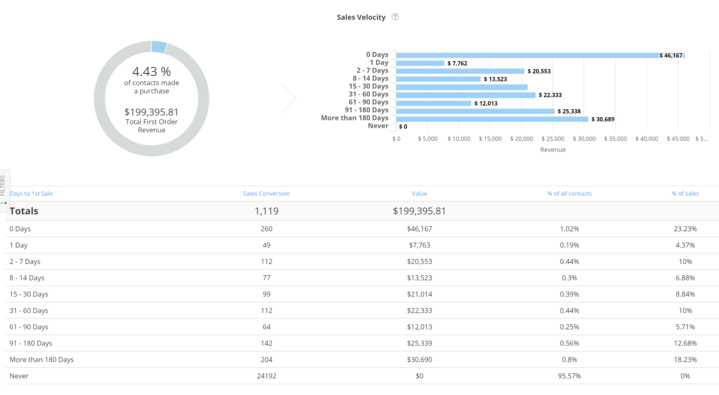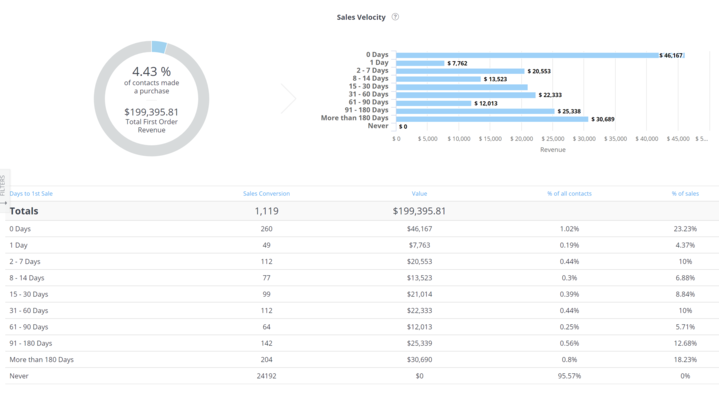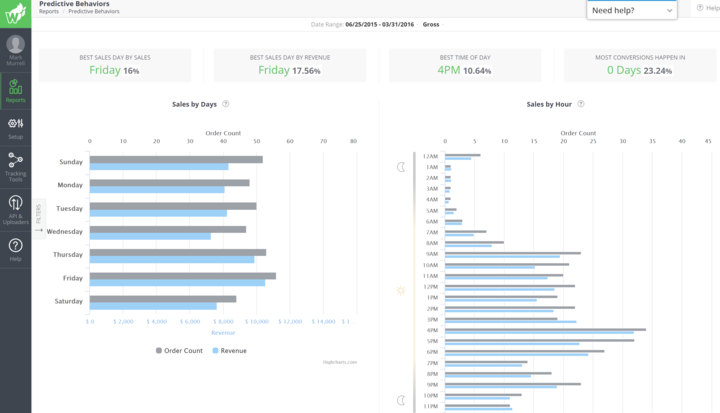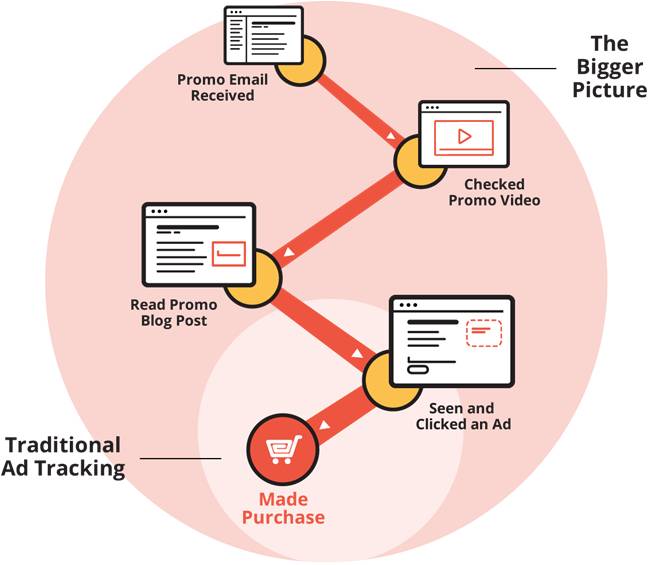"I almost canceled my most profitable ad campaign because I was measuring response every week instead of every month."
"I stuck with an email offer that worked great although those leads took much longer to convert."
One of these marketers understands the value of knowing how long it takes to convert a prospect into a customer. He can market smarter, report results accurately, and get the best ROI,
Which kind of marketer are you?
Understanding how long new leads take to purchase gives you insight into how long the customer journey is, when you should evaluate results, and how many overall new leads ever purchase your products.
Most importantly, you understand more about the sales channels that are driving revenue over time so you can replicate what's working and improve the ROI of your campaigns.
Getting Real Answers
Most marketers ask business questions like:
-
“Where did I find my best customers?”
-
“Did that lead generation campaign really drive any sales?
Many try to find the answers by analyzing last-click attribution data—the only information they may have.
But here’s the thing: the longer prospect take to purchase the less likely you are to get an accurate answer that way. Last-click attribution can’t tell you about the customer’s history, why he joined your mailing list, when he opted in, and how many times you have reached out to him between first optin and first purchase.
It also can’t show you the customer journey over time so you know to stick with the ads, emails, message and offers that are driving in revenue.
One Customer’s Experience
One Wicked Reports customer learned that only 4.4% of new leads from his Facebook ads ever purchased. Yet over time those ads have generated over $800,000 in revenue on an Facebook expenditure of $125,000.
Now consider that more than half of his leads take over a week to purchase. That means last-click attribution won’t help him scale to find more of the good sales.
But he found the information he needed by analyzing data in the Sales Velocity Report. You can, too.
Understanding Sales Velocity
Sales Velocity is the difference in days between when a prospect first joined your email list and when they first purchased your product.
Zero days means someone bought the same day they received your email. That does happen and you've gotta love those customers.
Most often, however, some time passes before a prospect decides to buy. Extended sales cycles can stretch over weeks or even months.
The Sales Velocity Report
The Sales Velocity Report shows you that buying cycle -- as well as the value of each first purchase. You see results measured by total, by percent purchased and percent that didn't purchase. To drill down to greater detail, just filter by any of the report elements.
This report gives you the right perspective to measure the ROI of your prospects as they become leads and then first-time customers. When you know how your customers are behaving—when you understand the complete sales cycle and not just the last click—you know when to expect a response.
If you know, for example, that leads from online ads purchase within a week while leads from emails buy after a month, you will measure the return on investment accordingly -- tracking by the right time frame. You will also know not to cancel a campaign with a 15-day response if it doesn't deliver revenue in the first week.
Even more important, you can scale your ad and email investments to get the best return. This information is particularly valuable for analyzing a campaign, a sales channel, or a special offer. Because you know the value of the responses, you can analyze which channel is bringing in more money regardless of how long it takes. You want to stick with the money-making channels even if it takes longer for the money to come in.
Because the Sales Velocity Report tells you exactly how long your sales cycle is, you can stop guessing and focus on what works by:
• Pinpointing how the length of your sales cycle varies by source, campaign, audience, and offer
• Analyzing how long it takes for leads to become customers
• Discovering which marketing programs have the shortest sales cycle
Plus, you can filter on any element in the report and see the data presented clearly.
Watch the video to understand how and why the Sales Velocity Report is key to understanding your advertising campaigns so you can make intelligent, informed decisions.






